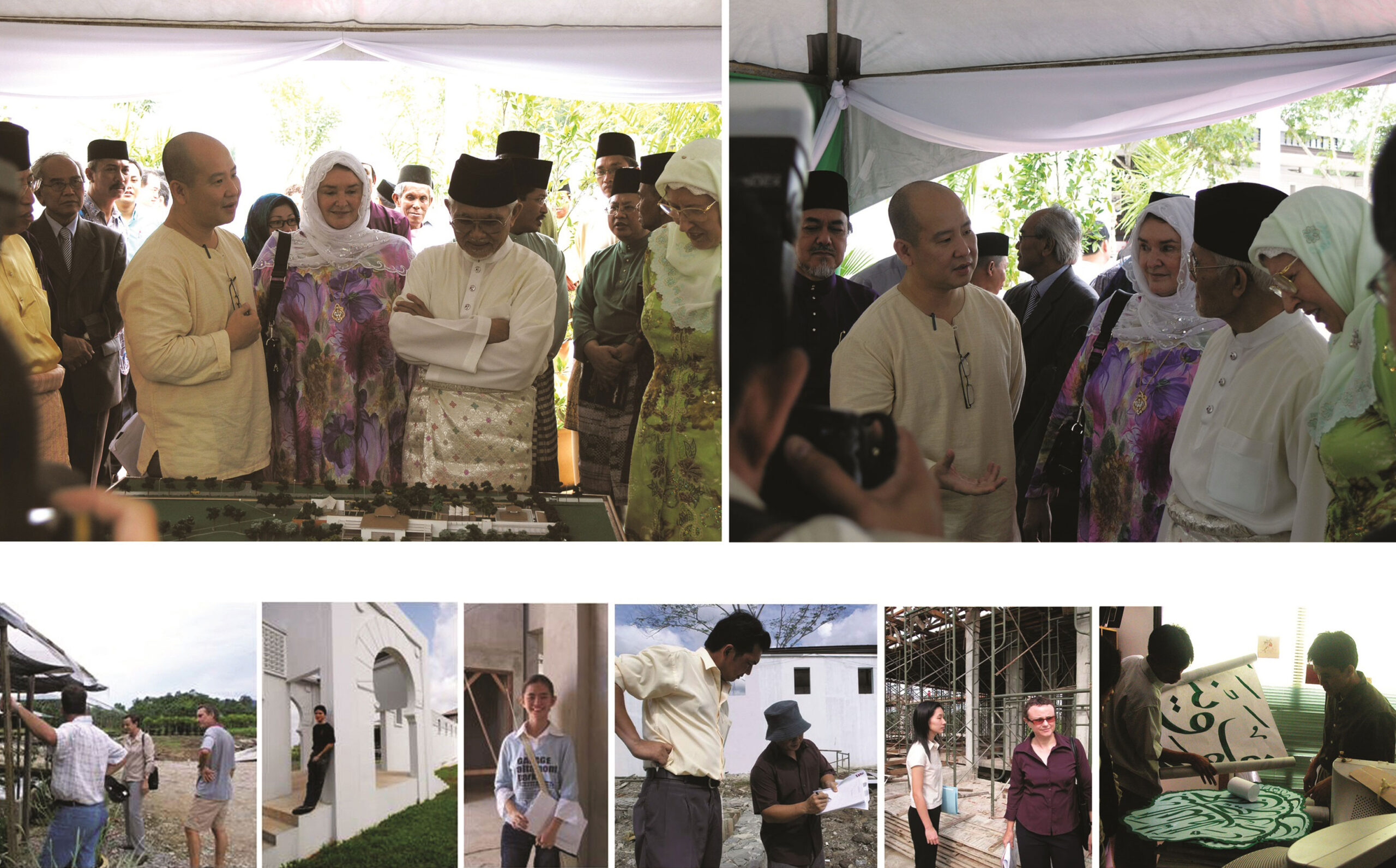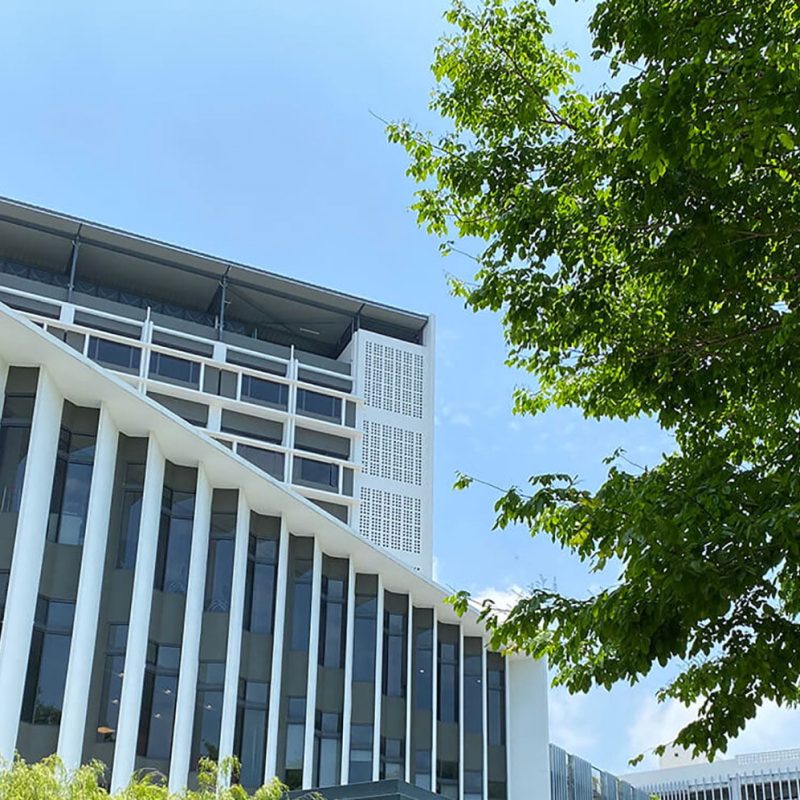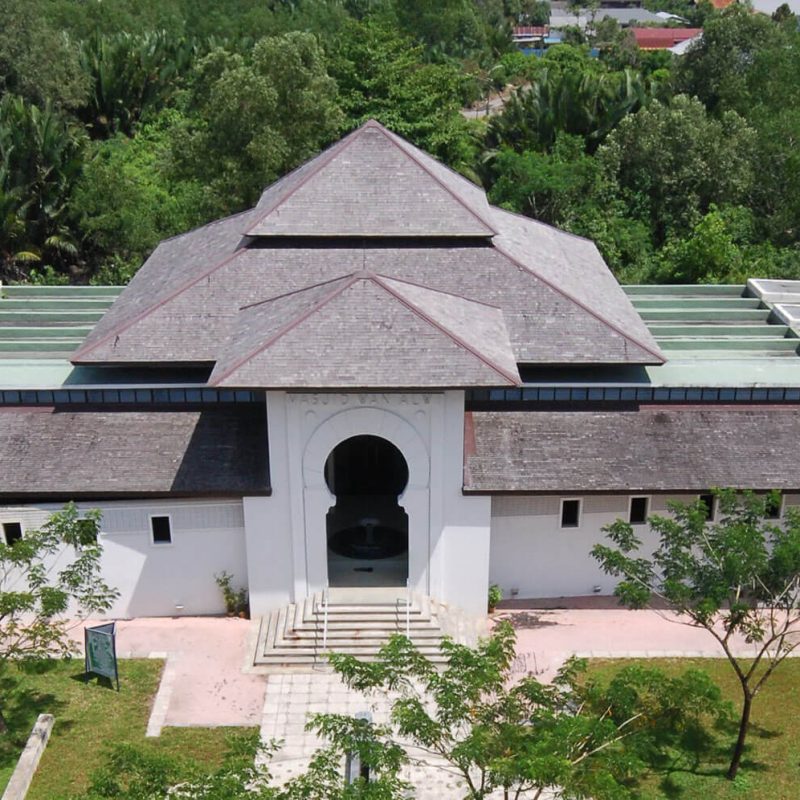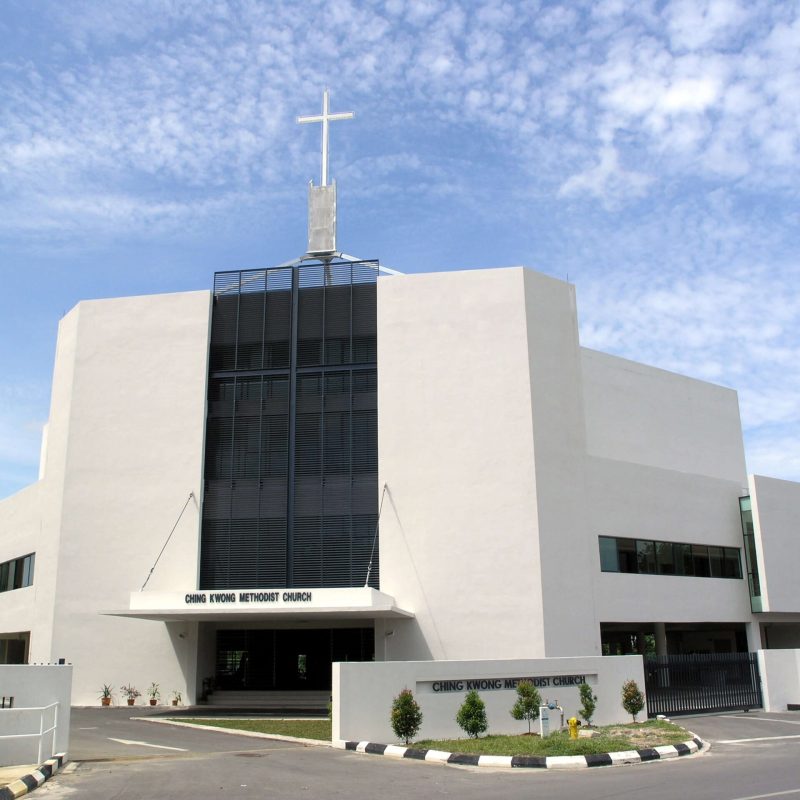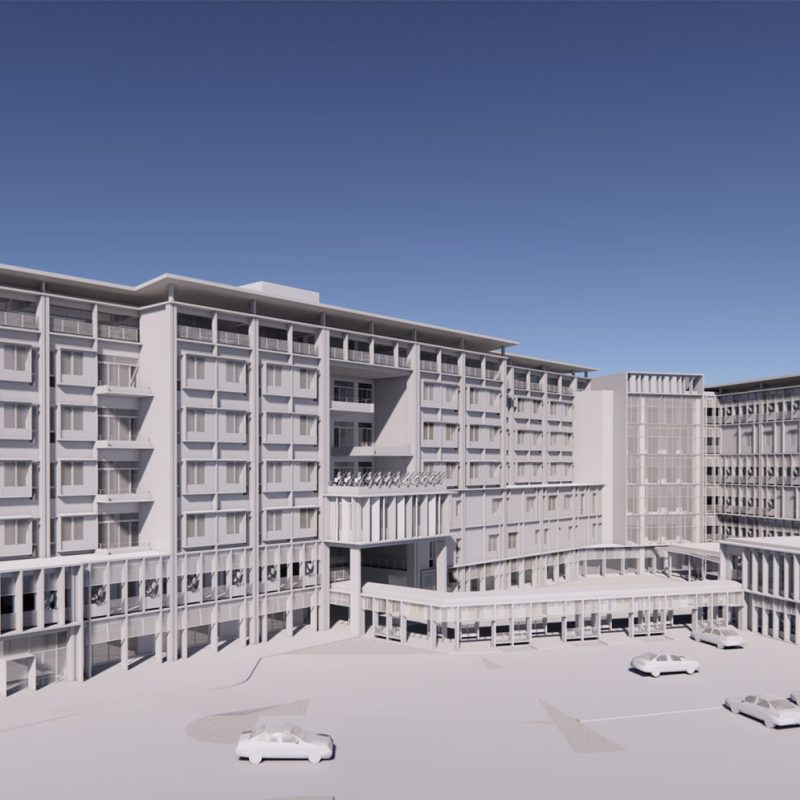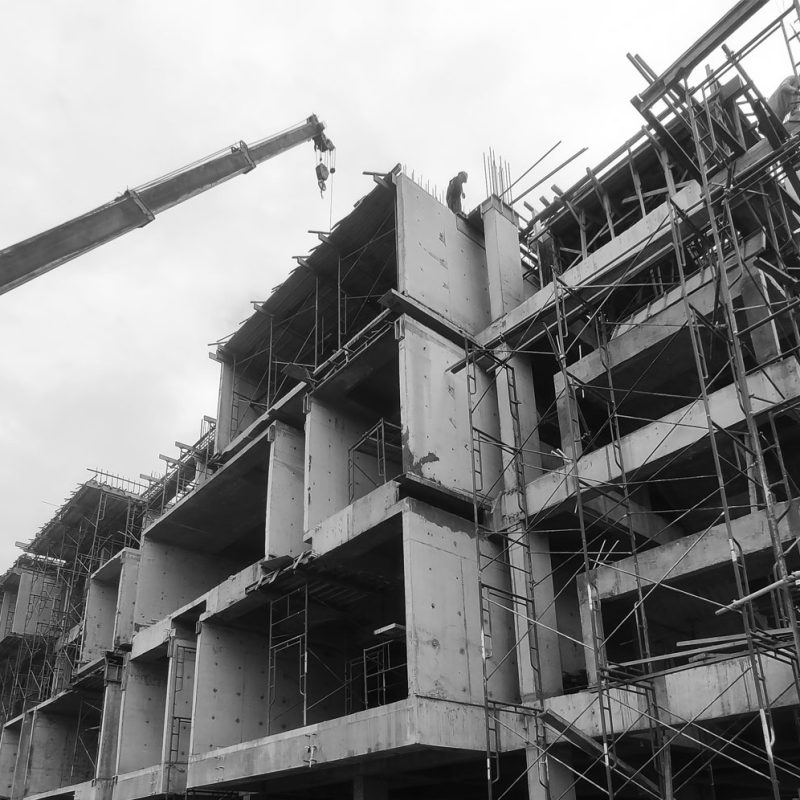Location
- Malaysia
City
- Kuching | Sarawak
Duration
- 2001 – 2006
Client
- Ibraco Properties Sdn Bhd
Surface
- Site area
- : 4 acres
- Building area
- : 1550 m2
- Building height
- : 1 storey
Status
- Completed
Project Type
- Public and Civic Buildings
Themes
- Religious | Mosque
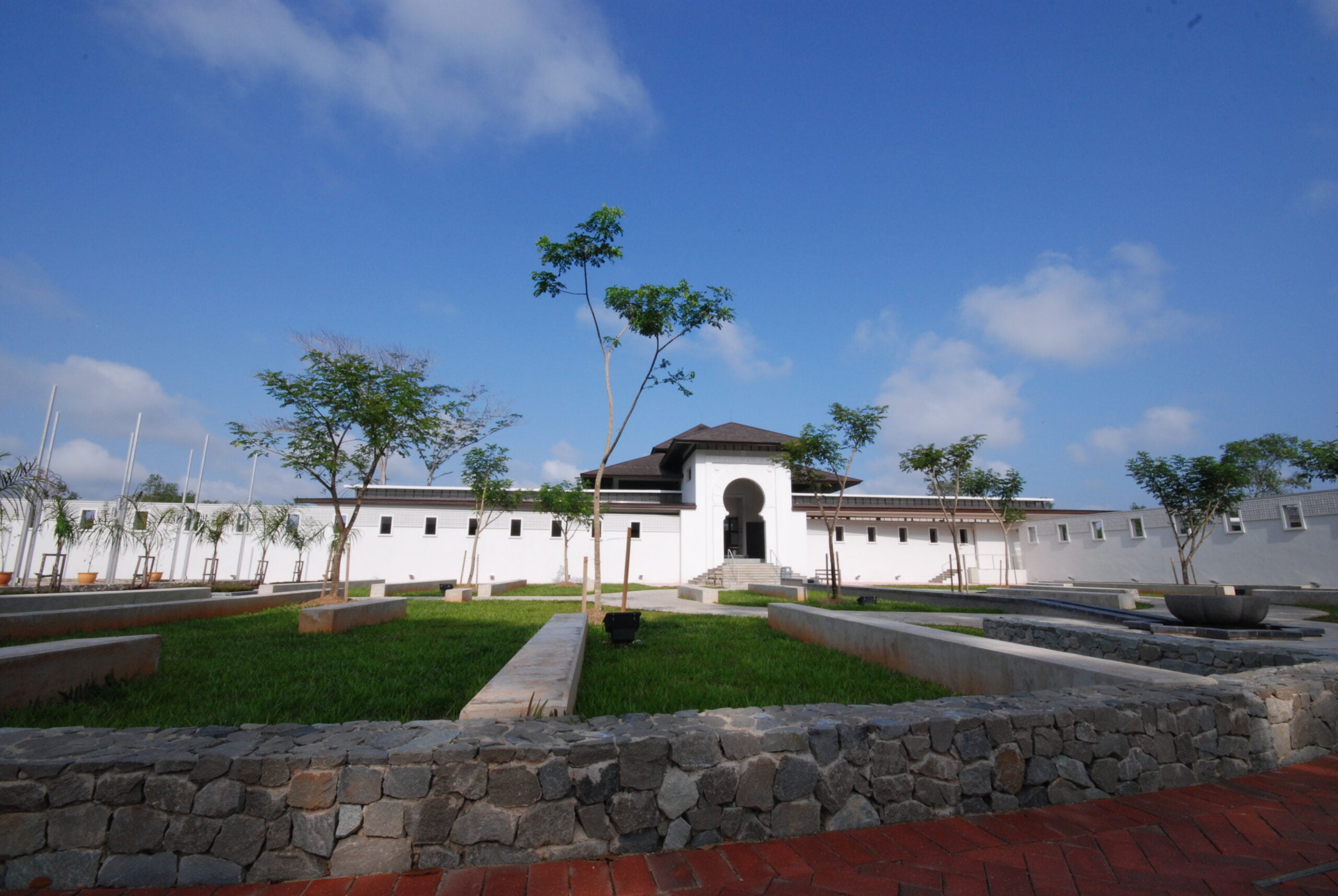
The term ‘wakaf’ has two meanings;
One means donation of land, usually for religious purposes.
The other means a small raised structure with a roof – usually located in a communal area of a kampung.
This is a local mosque located in the heart of Tabuan Jaya, a suburb in Kuching. The land and the Masjid are a donation in the form of a ‘wakaf’ from the family that developed Tabuan Jaya to the local Muslim community.
An existing surau lies on the south end of the site that is populated with mature trees. These trees provide a natural canopy to the site, sheltering the site with the light scattering quality of their fine leaves. These two elements were retained and play an important role in the shaping of the design.
Although there is a population of about 3,000 Muslims, there was no Friday mosque in Tabuan Jaya. Their religious and communal needs were served by several neighbourhood suraus. As the Malay population migrates to the new suburbs, many aspects of their traditional communal lifestyle are lost, usually because there are no venues available for this type of communal interaction and activity.
Therefore, it is necessary for the new Masjid not only to provide a space for worship but also to have a hybrid of spaces designed to recapture this lifestyle found in the kampong and integrate it into the local urban fabric.


There are 4 main site forces behind the initial formation of spaces and their relationships:
- the orientation of the building toward Mecca
- relationship of the building with nature in the form of the Tree Court
- relationship of the building with the river
- the street as the main means of access
The intersecting of the 2 main axes sets off an interesting geometry, which allows the demarcation lines between the 3 Realms of the scheme:
- the Realm of Nature and Community, which are formed by the Tree Court and the Women’s Court.
- the Transitional Realm formed by the Main Entrance Hall and the Ablution rooms. The transitional spaces are entered at 3 points via the tree court and two ramped entrances from the north and the south through the ladies’ courts terminating at the men’s and women’s ablution rooms respectively
- the Realm of Prayer is formed by the Main Prayer Hall with its two wings, the Women’s Prayer Hall; and the Spill Hall
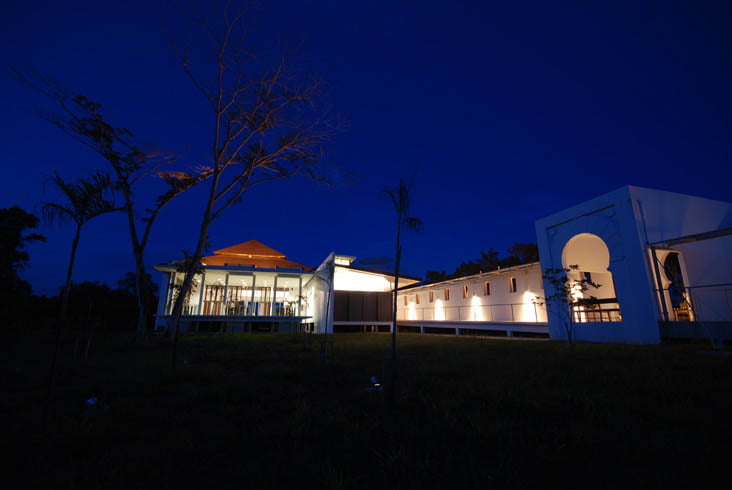
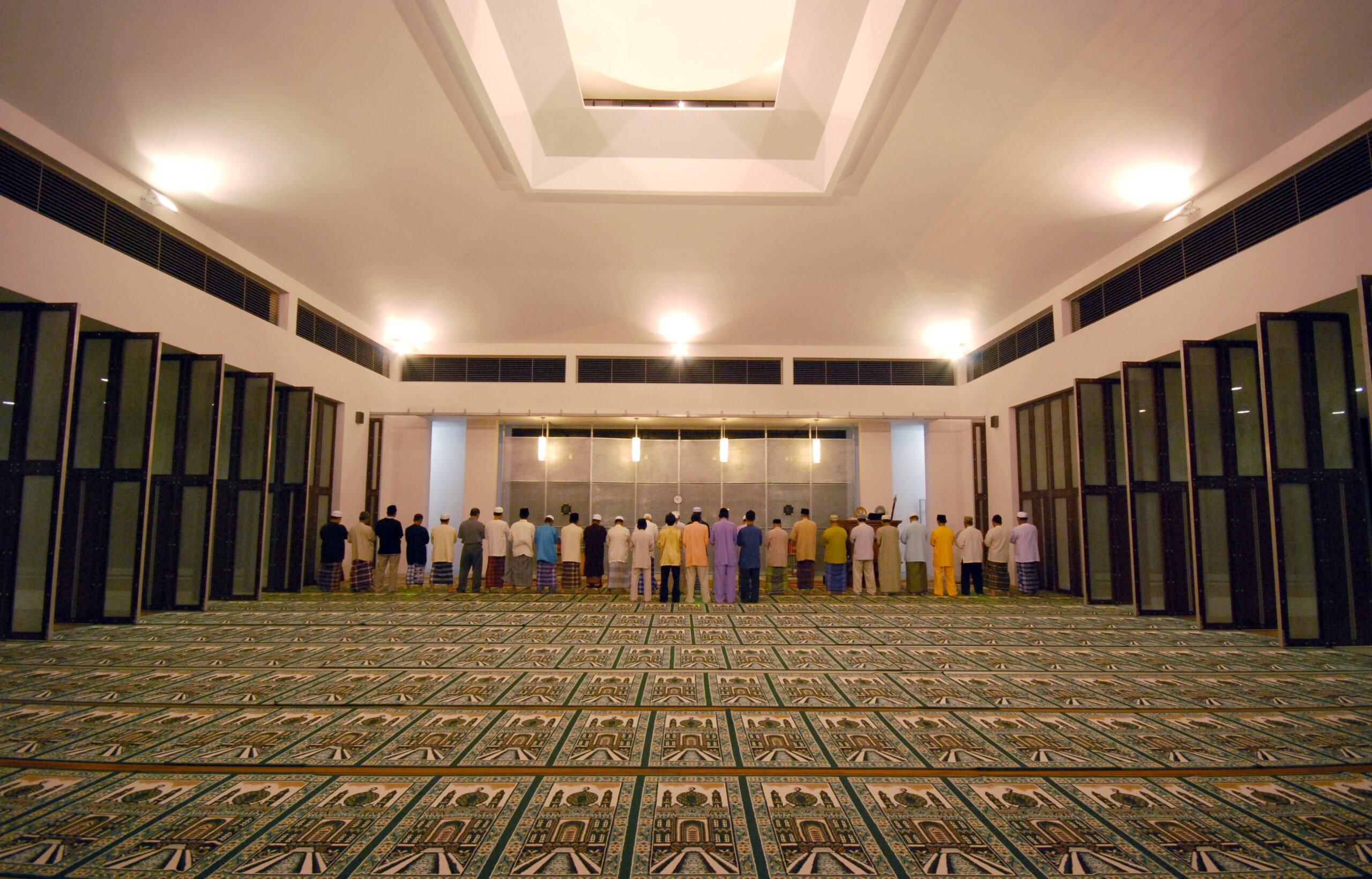
The Main Prayer Hall is a simple square plan, capped with a pyramidal pitched roof of belian shingles. It is naturally ventilated. It is raised off the ground by 1.5 m; creating an undercroft space that promotes air movement under the building with the aim of cooling it. The floors of the prayer hall and the north and south wings are intermittently lined with timber floorboards along the lines of the “saf”. These floorboards are laid with gaps in between them, to allow the air to convect through from under the building.
On Fridays, the Prayer Hall can be extended into the north and south wings by opening the 4.2 m – high pivot screen doors on the sides. The four halls including the spill hall at the south transitional zone of the building can accommodate 1000 people.
This project holds significance as it weaves a thread between the new and the old – which includes the old surau and the tree court. There is a Spirit of the old in the new – in the built form, the usage of local materials such as the roof shingles and the creation of communal spaces in the suburb.
Team Credits
Architect
- Design Network Architects Sdn Bhd
Engineer
- C & S : Perunding CHT
- M & E : CH Engineering Sdn Bhd
Landscape Architect
- Ecoscape Sdn Bhd
Contractor
- Pembinaan Kuantiti Sdn Bhd
Design Team
- Wee Hii Min
- Leong Gian Wen
Photography
- Lau Ming Ngi
Publications
Awards
- Mention | PAM Awards 2008 | Public and Civic Buildings
Share our project
